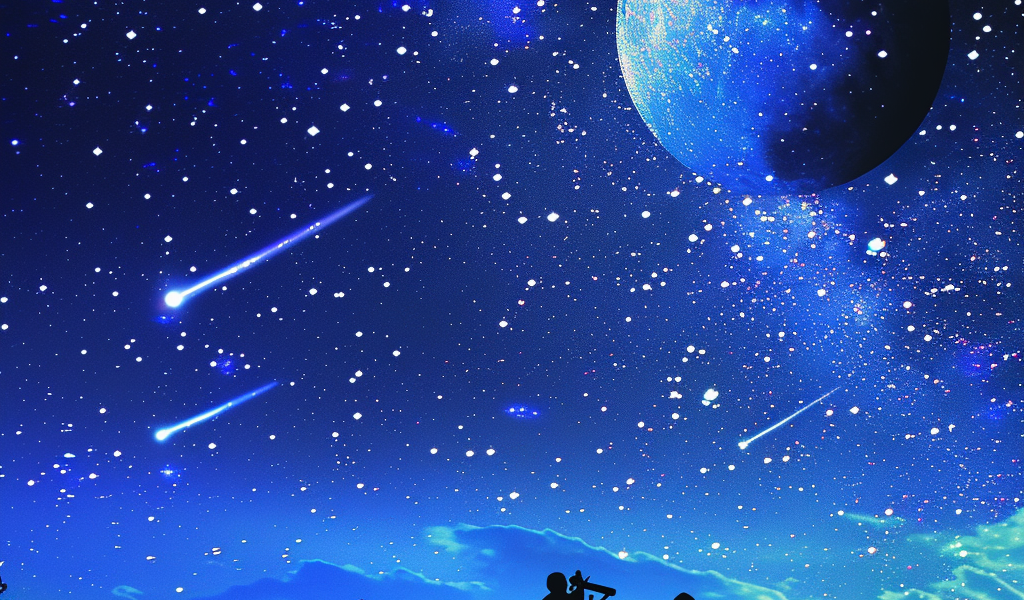Celestial Spectacle: Cold Moon, Jupiter, and Geminid Meteor Shower Highlight December 2024
The week of December 13 to December 20, 2024, promises a celestial spectacle for skywatchers, featuring the last Full Moon of the year, known as the Cold Moon, alongside the brilliance of Jupiter and the peak of the Geminid meteor shower.
Friday, December 13
On this day, the gibbous Moon will make a notable appearance, passing just 4° north of the planet Uranus at 5 A.M. EST. At this time, the Moon will be positioned in Aries, while Uranus will be located in the neighboring constellation of Taurus. Both celestial bodies will set together around 5 A.M. local time, creating a unique sight for early risers.
For those hoping to catch a glimpse of Uranus, the evening sky offers a better opportunity. Approximately two hours after sunset, the Moon will drift away from Uranus, allowing the ice giant to be seen about 40° high in the eastern sky. Look for Uranus nearly 11° above Aldebaran, the red giant star that marks the eye of Taurus. The planet is situated about 7.5° southwest of the Pleiades star cluster and roughly 2.4° south-southwest of the 5th-magnitude star 63 Arietis. At magnitude 5.6, Uranus should be visible with binoculars or a small telescope, although the bright Moon may hinder visibility compared to darker conditions. Observers should look for a small, flat star with a grayish-blue hue, noting that Uranus will appear as a tiny circle rather than a pinpoint of light like surrounding stars.
The Geminid meteor shower will reach its peak on this night, although the bright Moon will significantly diminish the display. As darkness falls, stargazers can still attempt to spot meteors originating from the radiant near the heads of Gemini, the Twins. However, the Moon’s brightness will interfere with visibility, making it challenging to see the meteors clearly. As the evening progresses, the Moon will move closer to Gemini, further reducing the chances of catching falling stars. Fortunately, the Ursid meteor shower, which peaks just before Christmas, will occur under darker skies, providing a better opportunity for meteor watching later in the month.
Key astronomical timings for December 13 include:
- Sunrise: 7:14 A.M.
- Sunset: 4:35 P.M.
- Moonrise: 2:54 P.M.
- Moonset: 5:26 A.M.
- Moon Phase: Waxing gibbous (96%)
Note that the timings for sunrise, sunset, moonrise, and moonset are provided in local time for the coordinates 40° N 90° W, and the Moon’s illumination is calculated at 12 P.M. local time from the same location.
Saturday, December 14
Asteroid 15 Eunomia will reach opposition in the constellation Auriga at 1 A.M. EST. Unfortunately, the bright Moon will be nearby in northern Taurus, which may obscure the view. Despite being an 8th-magnitude object, Eunomia should still be visible through larger telescopes, although the surrounding deep-sky objects will likely be washed out due to the Moon’s brightness. Stargazers are encouraged to revisit Auriga later in the month once the Moon has moved on, as conditions will improve for observing both the asteroid and other celestial wonders in that region of the sky.
As the week progresses, enthusiasts can look forward to additional astronomical events, including the ongoing visibility of Jupiter, which remains a prominent feature in the night sky. Observers are encouraged to take advantage of the clear nights to explore the wonders above, whether by telescope or simply by gazing up at the stars.
Keep your binoculars and telescopes ready, as this week offers a unique opportunity to witness the beauty of the cosmos, from the shimmering Full Moon to the elusive meteors and distant asteroids.





